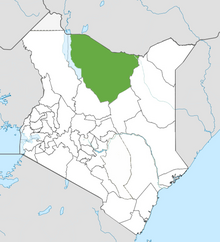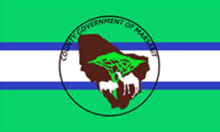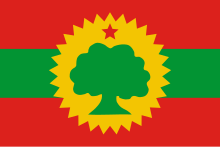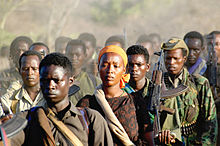192:
security and lacking the concern to do so. The government has long failed to develop the region, allowing for political, economic, and social instability and fostering a culture of violence and lawlessness. There had been clear evidence of an impending attack in Turbi, pointing to government failure to place preventative measures. The attack was so anticipated, as the reason most victims of the attack were children and elderly because the men were in the fields where they expected the attack to occur, Nineteen days before the massacre, an MP had called a press conference to discuss the inevitability of a severe interethnic conflict, due to an increase in sporadic killings and violence, since
January 2005. The Kenyan government recognized its role in the massacre but vehemently denied its negligence contributed to the violence. Defending themselves, they pointed out the several peace talks they had conducted before the massacre. The government cited political ethnocentrism as the key contributor to the conflict, claiming they had done an adequate intervention, but could not prevent hostilities fueled by political leaders in the region
73:
of the region. The conflict culminating with the Turbi massacre can be traced back to a 2002 unsolved murder of a Gabra man. The Gabra, believing the Borana to be responsible for the murder and, in retaliation, raided the Borana, stealing seven hundred twenty-eight goats. This escalation increased the frequency of conflict, necessitating intervention in the region. In conjunction with the Kenyan government and several NGOs, clan officials held several talks between the two clans devising a peace plan following the framework of the
Modogashe Declaration (2001), a document agreed upon by several pastoralist clans, outlining the consequence and reparations of inter-clan violence in Northern Kenya. These meetings were found to be largely inconclusive and unsuccessful. The resolution, which stipulated the transfer of goats as reparations, was largely rejected by both clans. January 2003, the three-year period of escalation within clan relations, Kenyan President
127:
self-determination and liberation of the Oromo people. Fighting the
Ethiopian and Kenyan governments, the OLF The Gabra and Borana, both of whom fall under the larger Oromo umbrella, share differing stances on the legitimacy of the OLF. The OLF has been primarily run by Ethiopian Boranas, while Kenyan Gabra's have rejected mainly the OLF's vision for the Oromo people. The Turbi Massacre was conducted with military-like precision, pointing to its premeditation and its organization by a larger body. The violence conducted on the Turbi Massacre was not a random spark of violence, instead an organized assault by a military force. Many of the attackers fled into Ethiopia, supporting the notion that the OLF instigated it.
98:
clans concerning access to water and pasture. As access to resources declines, the frequency of interclan violence increases, along with the prominent culture of cattle theft. Sitting on the border between
Ethiopia and Kenya, the region has historically led to ethnic divisions between the transfer of Borana across Ethiopian and Kenyan borders. A consequence of British colonialism was the transfer of nomadic clans across borders, in line with political objectives. This transfer, especially in the crossing of Ethiopian Borana into Kenya, increased the interethnic animosity, as conflict, or instead, difference, was not limited to the ethnic lines but the intersection of national identity.
111:
117:
145:
15 for any injuries sustained. In several districts, the declaration served as an effective means of resolving clan disputes and conflicts. While it may not have prevented conflicts between clans, it offered a resolution when followed by the concerned parties. In the conflicts leading up to the Turbi
Massacre, the Modogashe Declaration was largely ignored. The Modogashe Declaration has not been observed in Marsabit District since 2004 when it was found to have no legal backing.
65:
81:
154:
surrounding Turbi Day School, executing children, as teachers pleaded with their attackers. Of the thousand bandits, twelve were killed in the attack by a group of five, consisting of two police officers and three home guards. Though they eventually ran out of ammunition, their action is believed to have significantly reduced the potential victim total.
136:
tension in the area. Turbi, formerly part of the colonial Moyale
District and predominantly Borana, has remained a central political conflict since 1984. MPs, or members of Parliament, local to the region have utilized the dispute as political fuel, promising their constituents the return of the remain of Turbi to either Moyale or Marsabit.
153:
On July 12, A force of around one thousand Borana bandits conducted a series of six raids on Gabra villages around Turbi. Throughout the attacks, the bandits killed forty-four Gabra, including twenty-two children. The violence throughout the day was particularly harsh, as survivors recall the bandits
144:
In 2001 pastoral clans in
Eastern and North Eastern Kenya agreed upon several stipulations regarding cattle theft and pastoralist violence in the region. The declaration stipulates that 100 cattle should be paid by the bandit or offending party's village for every man killed, 50 for every woman, and
135:
Turbi, currently recognized as part of the
Marsabit District, has remained the center of many post-colonial ethnic and geographic conflicts. Turbi, the site of the massacre, while formally a part of Marsabit District, a primarily Gabra region, was considered a disputed territory, further fueling the
126:
The Oromo
Liberation Front, OLF, has long been associated with the Turbi Massacre. A political party with a military faction, the Oromo Liberation Army (OLA), is believed to have heavily contributed to the Turbi Massacre. The OLF is a nationalist party within Ethiopia that strongly advocates for the
97:
Northern Kenya, dubbed the "Badlands," is home to extensive livestock production and generations of ethnic pastoral violence. The region is primarily home to nomadic pastoralists. Pastoralists, dependent on the vitality of their livestock, often engage in resource conflicts amongst other pastoralist
191:
709,000) in aid but received only a tiny proportion of their request. Following the massacre, the Kenyan government faced widespread backlash for its inadequate response and failure to prevent it. Northern Kenya has long been subjected to gross neglect by the government, failing to provide adequate
72:
The Gabra and Borana, two large ethnic clans, have resided in northern Kenya for generations, with the Borana also residing in
Southern Ethiopia. While the two clans had coexisted, they would encounter violent inter-clan conflicts consisting of resource disputes and cattle raiding practices typical
101:
Marsabit District is located in Kenya's driest region, with around 80% of its population being pastoralists Home to several pastoralist clans ( Gabra, Borana, Turkana, Rendille, and Samburu.) The region is notorious for major violent conflicts between ethnic groups. Following droughts, the nomadic
195:
It took twelve hours for news of the Turbi Massacre to reach Marsabit Town. Troops were dispatched, killing ten bandits and recovering around five thousand sheep by dusk. A military force authorized by Kibaki of around two thousand was dispatched but did little to track down the offending Borana
88:
Several unsuccessful meetings were called in the following three years to ease clan tensions, all unsuccessful, until peace conditions had finally been agreed upon in May 2005. This peace was short-lived as Ethiopian Boranas were killed, leading to retaliatory conflicts and worsening the already
77:,visited the Madera region in northeastern Kenya, criticizing the reparation system laid out by the Modogashe Declaration. His comments reduced the effectiveness of a system that de-escalated inter-clan conflicts, eventually leading to the District MP dissolving the Modogashe Declaration.
89:
severe clan tensions. The conflict eventually resulted in the death of Borana chief Benjamin Boru Wario. This sparked several more violent attacks, culminating with a series of raids conducted by around one thousand Borana bandits on Gabra villages surrounding Turbi on July 12, 2005.
170:
Similar to the series of skirmishes leading to the massacre, the Gabra responded to the violence with an attack on ten Borana in Bubisa, Kenya. Gabra attackers stormed a church vehicle driven by an Italian priest, removing and killing the Borana, including four children.
157:
During the raids, the bandits were believed to have stolen an estimated 3,000 cattle, 5,000 sheep, and 4,000 camels, in line with several disputes involving cattle before the eventual massacre and the general culture of
505:
296:
Oscar Gakuo Mwangi (2006) Kenya: Conflict in the ‘Badlands’: The Turbi massacre in Marsabit district, Review of African Political Economy, 33:107, 81–91,
422:
180:
40:
51:, most fleeing to Marsabit town. The massacre's aftermath sparked several violent inter-clan conflicts, raising the death toll to ninety-five.
525:
475:
416:
530:
500:
485:
355:
244:
287:
510:
495:
465:
445:
102:
clans tend to converge around existing water sources, often competing for the survival and success of their livestock.
272:
234:
535:
277:
490:
450:
540:
183:
reported that Marsabit had around nine thousand displaced people, mainly Gabra. The Red Cross appealed for
455:
460:
208:
480:
440:
470:
213:
307:
331:
Galaty, John. “Boundary-Making and Pastoral Conflict along the Kenyan–Ethiopian Borderlands.”
520:
188:
8:
515:
32:
336:
321:
385:
351:
325:
268:
240:
110:
47:. Twenty-two of the sixty confirmed dead were children, and over six thousand people
24:
116:
297:
162:
in the region. Of the 12,000 stolen animals, only around 50% were recovered.
48:
184:
403:
397:
391:
379:
373:
159:
301:
434:
316:
Schlee, Günther, and Abdullahi A. Shongolo. “The Post-Moi Period 2002–2007.”
36:
80:
74:
417:
KENYA: 9,000 now displaced in tense Marsabit — Kenya Red Cross (18 July)
340:
64:
31:
on the early morning of 12 July 2005. Hundreds of armed raiders of the
348:
Beyond Ethnicism: Exploring Racial and Ethnic Diversity for Educators
236:
Beyond Ethnicism: Exploring Racial and Ethnic Diversity for Educators
44:
23:
was the killing of fifty-six people by feuding clans in the remote
318:
Pastoralism and Politics in Northern Kenya and Southern Ethiopia
28:
374:
Kenya's wild north: Hostile area, hostile groups (13 July)
54:
423:
KENYA: Conflict over resources in border areas (1 August)
92:
288:"How killing of Gabra man led to massacre in Turbi".
196:bandits as most had already crossed into Ethiopia.
432:
404:Seven arrested over Kenya attack (18 July 2005)
320:, Boydell & Brewer, 2012, pp. 115–36.
139:
392:Catholic bishop killed in Kenya (15 July 2005)
506:Attacks on buildings and structures in 2005
398:Extreme tension in Kenyan village (16 July)
380:Kenya massacre: Survivor's tales (13 July)
335:, vol. 59, no. 1, 2016, pp. 97–122.
115:
109:
79:
63:
232:
55:Conflicts leading to the Turbi massacre
433:
174:
130:
93:Marsabit-District Pastoralist conflict
59:
386:In pictures: Kenya massacre (14 July)
165:
313:. 2020-07-03. Retrieved 2023-04-10.
293:. 2020-06-28. Retrieved 2023-04-10.
13:
526:Riots and civil disorder in Africa
278:"Scores killed in tribal massacre"
179:A week after the massacre, Kenyan
120:Oromo Liberation Front rebels 2006
105:
14:
552:
476:21st-century mass murder in Kenya
362:
148:
410:
367:
233:Nderitu, Wairimu (2015-12-29).
346:Nderitu, Wairimu (2015-12-29)
226:
1:
531:2005 mass shootings in Africa
501:Attacks on churches in Africa
219:
16:2005 tribal massacre in Kenya
350:. African Books Collective.
239:. African Books Collective.
140:Modogashe Declaration (2001)
7:
511:Attacks on schools in Kenya
202:
114:Oromo Liberation Front flag
10:
557:
496:School massacres in Africa
466:July 2005 events in Africa
446:Political history of Kenya
257:
209:List of massacres in Kenya
302:10.1080/03056240600671324
21:Kenya-Turbi City massacre
486:Ethiopia–Kenya relations
536:Mass shootings in Kenya
308:Massacare in Marsabit".
214:Cattle raiding in Kenya
84:Flag of Marsabit County
491:Child murder in Africa
343:. Accessed 4 May 2023.
333:African Studies Review
328:. Accessed 2 May 2023.
284:. Retrieved 2023-04-09
123:
121:
85:
69:
451:2005 murders in Kenya
326:10.7722/j.ctt3fgkvc.7
265:Indigenous World 2006
263:Sille Stidsen (2006)
119:
113:
83:
67:
541:Robberies in Africa
175:Government response
131:Turbi land disputes
60:Inter-clan tensions
35:tribe attacked the
456:Massacres in Kenya
124:
122:
86:
70:
43:area northwest of
461:Massacres in 2005
356:978-9966-1903-4-5
282:www.aljazeera.com
246:978-9966-1903-4-5
166:Gabra retaliation
68:Marsabit District
25:Marsabit District
548:
481:July 2005 crimes
251:
250:
230:
187:53.9 million/= (
49:fled their homes
556:
555:
551:
550:
549:
547:
546:
545:
441:Marsabit County
431:
430:
413:
370:
365:
260:
255:
254:
247:
231:
227:
222:
205:
199:
177:
168:
151:
142:
133:
108:
106:OLF involvement
95:
62:
57:
17:
12:
11:
5:
554:
544:
543:
538:
533:
528:
523:
518:
513:
508:
503:
498:
493:
488:
483:
478:
473:
471:Oromo conflict
468:
463:
458:
453:
448:
443:
427:
426:
420:
412:
409:
408:
407:
401:
395:
389:
383:
377:
369:
366:
364:
363:External links
361:
360:
359:
344:
329:
314:
304:
294:
285:
275:
259:
256:
253:
252:
245:
224:
223:
221:
218:
217:
216:
211:
204:
201:
176:
173:
167:
164:
160:cattle raiding
150:
149:Turbi massacre
147:
141:
138:
132:
129:
107:
104:
94:
91:
61:
58:
56:
53:
39:living in the
15:
9:
6:
4:
3:
2:
553:
542:
539:
537:
534:
532:
529:
527:
524:
522:
519:
517:
514:
512:
509:
507:
504:
502:
499:
497:
494:
492:
489:
487:
484:
482:
479:
477:
474:
472:
469:
467:
464:
462:
459:
457:
454:
452:
449:
447:
444:
442:
439:
438:
436:
429:
424:
421:
418:
415:
414:
411:IRIN coverage
405:
402:
399:
396:
393:
390:
387:
384:
381:
378:
375:
372:
371:
357:
353:
349:
345:
342:
338:
334:
330:
327:
323:
319:
315:
312:
309:
305:
303:
299:
295:
292:
289:
286:
283:
279:
276:
274:
273:87-91563-18-6
270:
266:
262:
261:
248:
242:
238:
237:
229:
225:
215:
212:
210:
207:
206:
200:
197:
193:
190:
186:
182:
172:
163:
161:
155:
146:
137:
128:
118:
112:
103:
99:
90:
82:
78:
76:
66:
52:
50:
46:
42:
38:
34:
30:
26:
22:
521:Ethnic riots
428:
368:BBC coverage
347:
332:
317:
310:
290:
281:
264:
235:
228:
198:
194:
178:
169:
156:
152:
143:
134:
125:
100:
96:
87:
75:Mwaki Kibaki
71:
37:Gabra people
27:of Northern
20:
18:
516:2005 riots
435:Categories
220:References
267:. IWGIA.
181:Red Cross
341:24805944
203:See also
45:Marsabit
258:Sources
354:
339:
324:
311:Nation
291:Nation
271:
243:
33:Borana
337:JSTOR
322:JSTOR
41:Turbi
29:Kenya
352:ISBN
269:ISBN
241:ISBN
189:US$
185:KSh.
19:The
298:doi
437::
280:.
425:.
419:.
406:.
400:.
394:.
388:.
382:.
376:.
358:.
306:"
300::
249:.
Text is available under the Creative Commons Attribution-ShareAlike License. Additional terms may apply.



